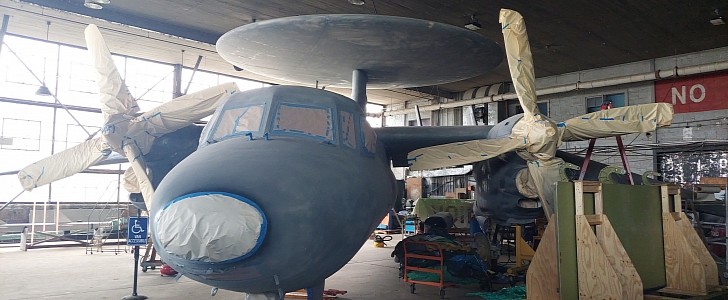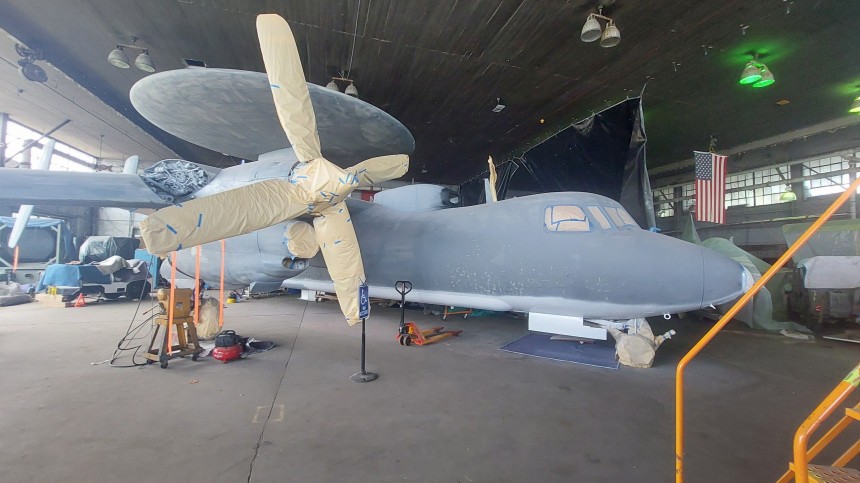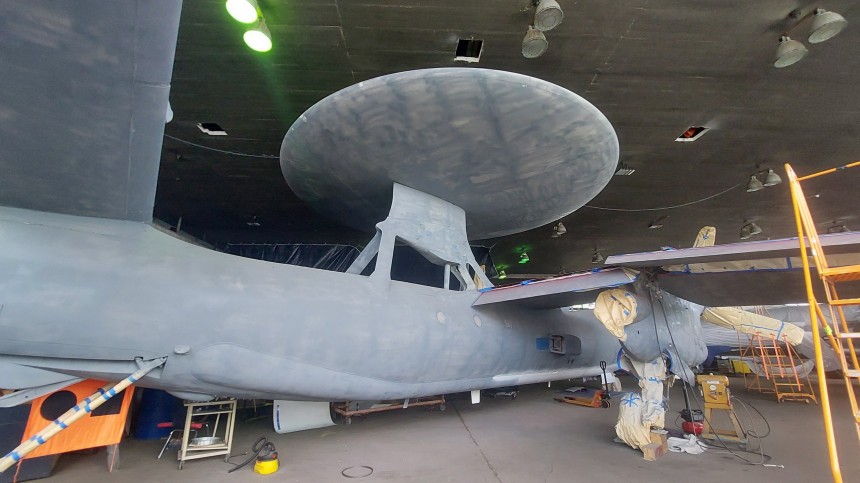Classic car restoration is a multi-billion dollar industry. But the same can't always be said for the automobile's air-soaring counterparts. When it comes to old warplanes especially, most people just don't have the time, skills, or money to do it properly.
But a handful of places across America indeed have the funds, skills, and time to restore old warbirds properly. One such place happens to be located in a former Air Force hangar on the ground where Mitchel Air Force Base once stood. Today, it's the sight of the Cradle of Aviation Museum in Garden City, New York. A museum dedicated to a century-plus of achievements in aviation achieved in New York State's Long Island region.
Next door to the museum's main building is where beat-up old warplanes come back to life. We've already showcased the most noteworthy airplane sitting in the nearly century-old hangar Cradle of Aviation Restoration Hangar. That'd be the very last Grumman F-14D Tomcat ever to fly in U.S. Navy service. But besides that, there are a handful of other airplanes in the hangar. Waiting for their shot at a full restoration.
After ogling at the F-14 for a little while, you simply walk past the nearly complete Republic F-105 Thunderchief and replica Grumman X-29 swept-wing prototype. From there, you find the second most recent addition to the Cradle of Aviation's restoration hangar, a Grumman E2C Hawkeye AWACS airplane. In fact, the enormous 24-foot (7.3-meter) AN/ APA-143 radar rotodome is the very first thing one sees when given permission to have a look inside this often secretive restoration hangar.
Since the mid-1960s, the E2C Hawkeye's served as the United States Navy's primary tactical airborne warning and AWACS airplane. The medium-sized form factor, more fuel-efficient Grumman Hawkeye proved to be a welcome middle ground between the turbofan engine performance of the Boeing E3 Sentry, a plane that joined service with the Hawkeye in the mid-1970s. Of course, the E2C's ability to take off from just about any NATO aircraft carrier made it preferable to the faster Sentry in a number of instances.
Over 300 E2C Hawkeyes left Grumman's Bethpage and Calverton, New York factories between 1964 and 1994. Even today, the now merged Northop Grumman produces an upgraded variant of the original Hawkeye E-2D Advanced Hawkeye. As for this particular Grumman E2C, serial number 160012, we had to do some digging after the fact to uncover the truth about its life winding up at the Cradle.
After further inspection, we find that this Hawkeye was built sometime before 1966 and was one of a handful upgraded in the mid-1980s to accommodate more powerful Allison T56-A-427 turboprop engines at 5,100 shaft-hp each. Along with a more powerful Litton AN/ALR-73 PDS radar dome, this Hawkeye packed a wicked punch equal in its role to the most armed to the teeth F-15E Strike Eagle. Just in radar capability instead of raw firepower.
Not much is known about what happened to this E2C in between these test trials and the present day. What we do know is that it entered the collection of the Cradle of Aviation Museum on Long Island in July of 2009. From there, the airplane began a strenuous and still yet not finished restoration job funded entirely by donations and run by a team of highly dedicated volunteers.
Luckily enough for us, we just happened to stop by the restoration hangar mere hours after a major portion of 160012's undercarriage respray job had finally been completed. The smell of freshly sprayed aerospace-grade paint and primer permeated the entire hangar as we observed all there was to see in this magical place where American jets go to be reborn.
While walking in a 360-degree rotation around this Hawkeye, you'll find genuine OEM Grumman maintenance equipment left over from the Bethpage and Calverton factories, helping to keep these warbirds in top shape. Items like hydraulic fluid service machines, air compressors, and two-ton capacity chain lifts that would have been lost to history if not for the Cradle of Aviation have proven to be just as reliable as the airplanes they maintain.
It's only a matter of time before this E2C Hawkeye and the F-14D, F-105, and X-29 Replica will all be ready for semi-full-time display somewhere inside the museum. We can't wait for that day to arrive.
Next door to the museum's main building is where beat-up old warplanes come back to life. We've already showcased the most noteworthy airplane sitting in the nearly century-old hangar Cradle of Aviation Restoration Hangar. That'd be the very last Grumman F-14D Tomcat ever to fly in U.S. Navy service. But besides that, there are a handful of other airplanes in the hangar. Waiting for their shot at a full restoration.
After ogling at the F-14 for a little while, you simply walk past the nearly complete Republic F-105 Thunderchief and replica Grumman X-29 swept-wing prototype. From there, you find the second most recent addition to the Cradle of Aviation's restoration hangar, a Grumman E2C Hawkeye AWACS airplane. In fact, the enormous 24-foot (7.3-meter) AN/ APA-143 radar rotodome is the very first thing one sees when given permission to have a look inside this often secretive restoration hangar.
Since the mid-1960s, the E2C Hawkeye's served as the United States Navy's primary tactical airborne warning and AWACS airplane. The medium-sized form factor, more fuel-efficient Grumman Hawkeye proved to be a welcome middle ground between the turbofan engine performance of the Boeing E3 Sentry, a plane that joined service with the Hawkeye in the mid-1970s. Of course, the E2C's ability to take off from just about any NATO aircraft carrier made it preferable to the faster Sentry in a number of instances.
After further inspection, we find that this Hawkeye was built sometime before 1966 and was one of a handful upgraded in the mid-1980s to accommodate more powerful Allison T56-A-427 turboprop engines at 5,100 shaft-hp each. Along with a more powerful Litton AN/ALR-73 PDS radar dome, this Hawkeye packed a wicked punch equal in its role to the most armed to the teeth F-15E Strike Eagle. Just in radar capability instead of raw firepower.
Not much is known about what happened to this E2C in between these test trials and the present day. What we do know is that it entered the collection of the Cradle of Aviation Museum on Long Island in July of 2009. From there, the airplane began a strenuous and still yet not finished restoration job funded entirely by donations and run by a team of highly dedicated volunteers.
Luckily enough for us, we just happened to stop by the restoration hangar mere hours after a major portion of 160012's undercarriage respray job had finally been completed. The smell of freshly sprayed aerospace-grade paint and primer permeated the entire hangar as we observed all there was to see in this magical place where American jets go to be reborn.
It's only a matter of time before this E2C Hawkeye and the F-14D, F-105, and X-29 Replica will all be ready for semi-full-time display somewhere inside the museum. We can't wait for that day to arrive.















